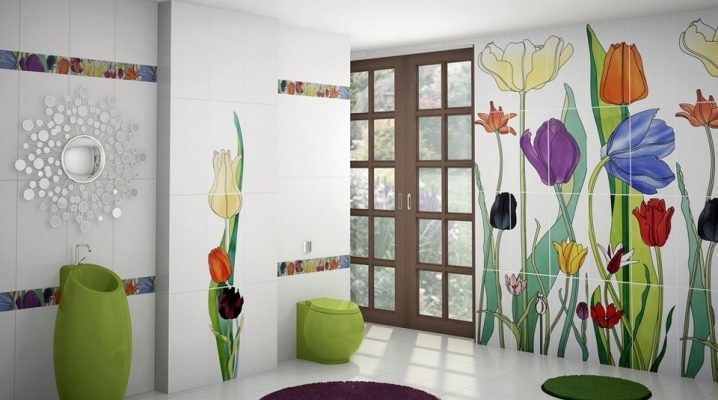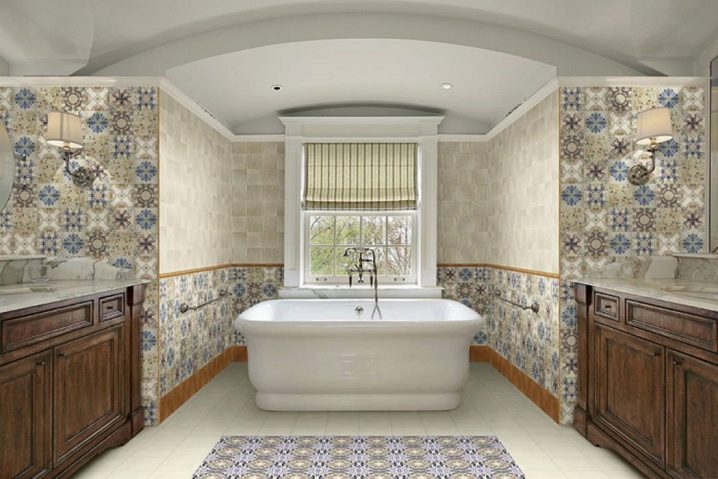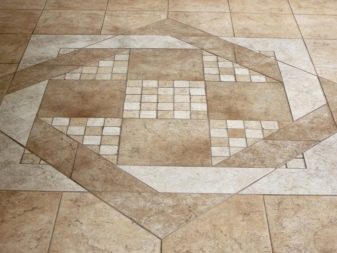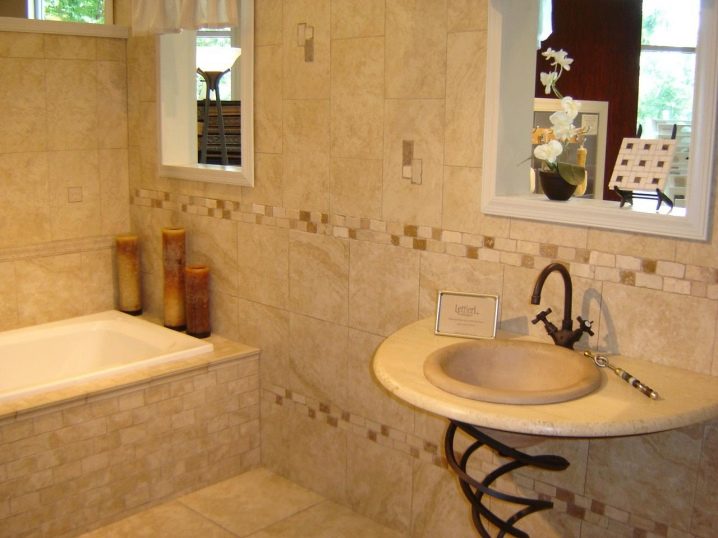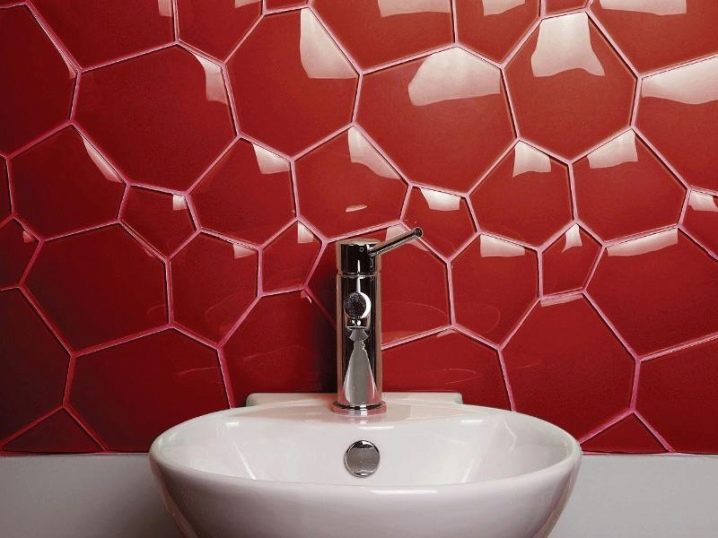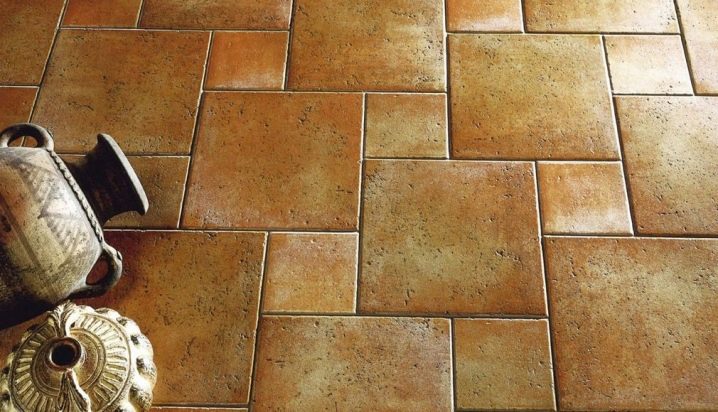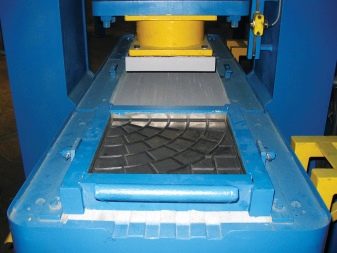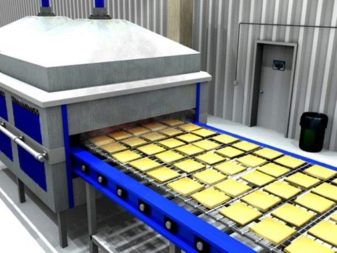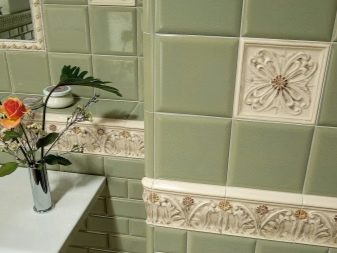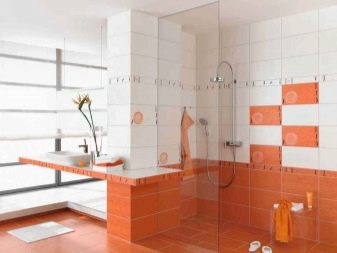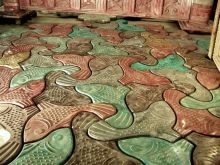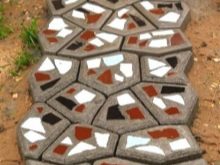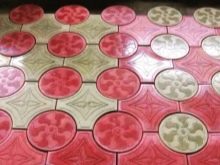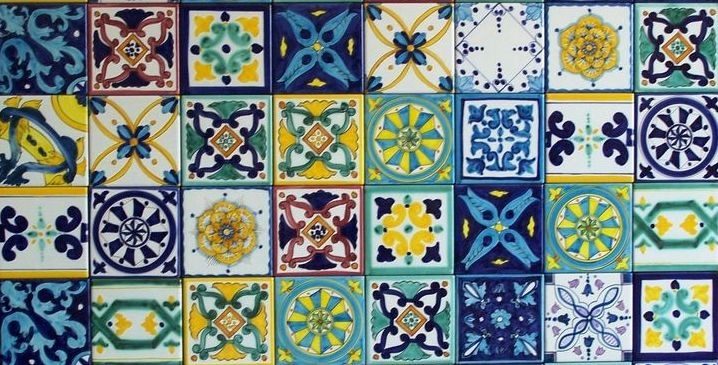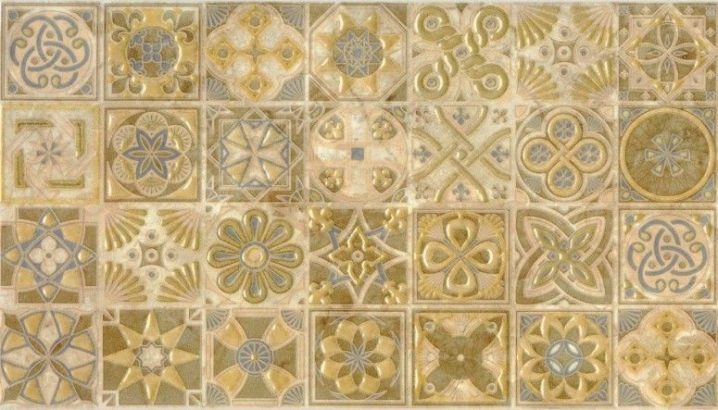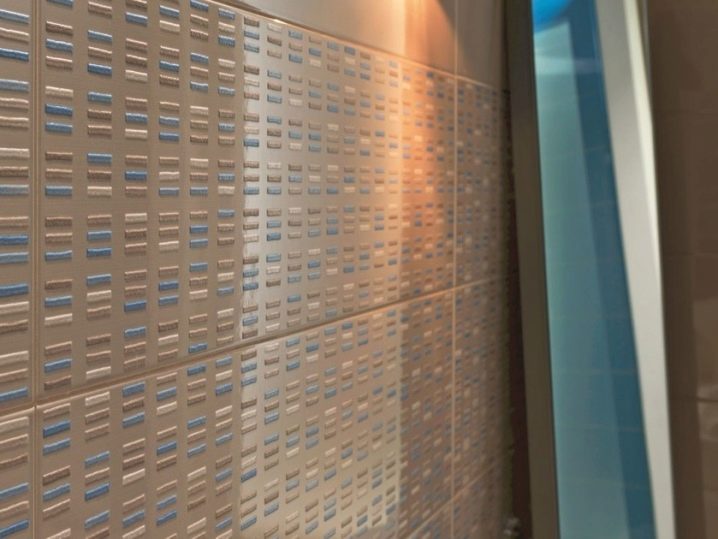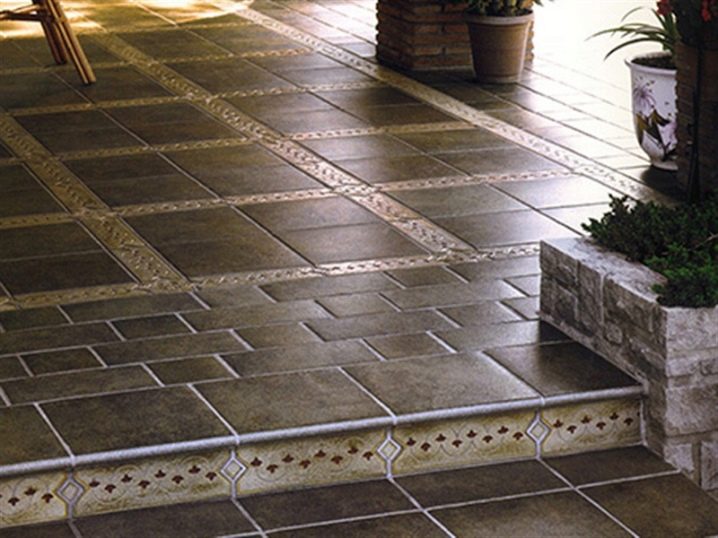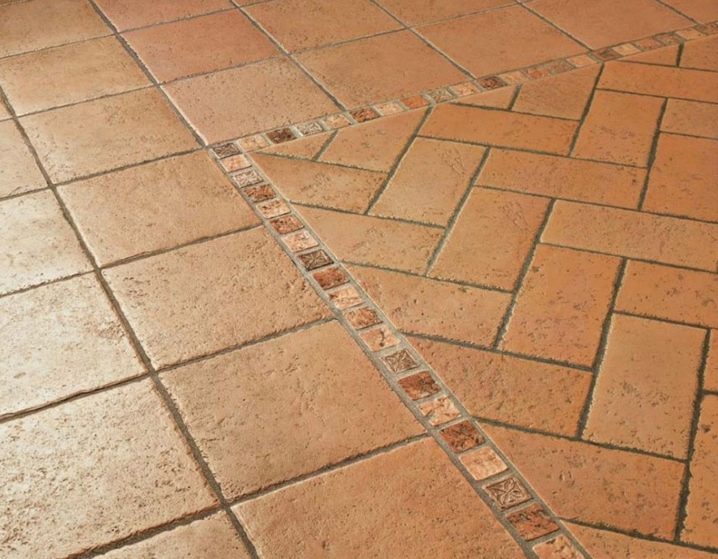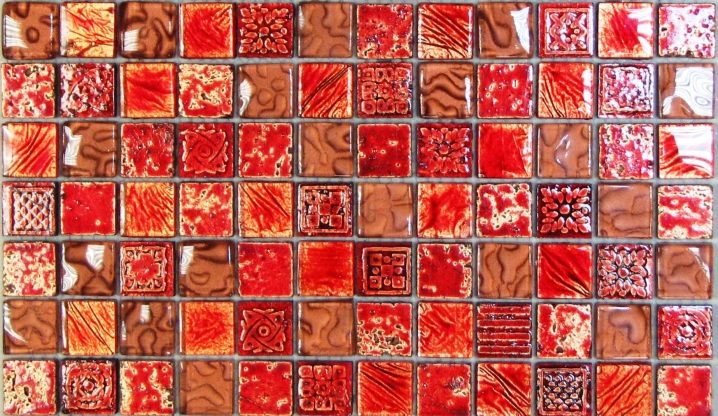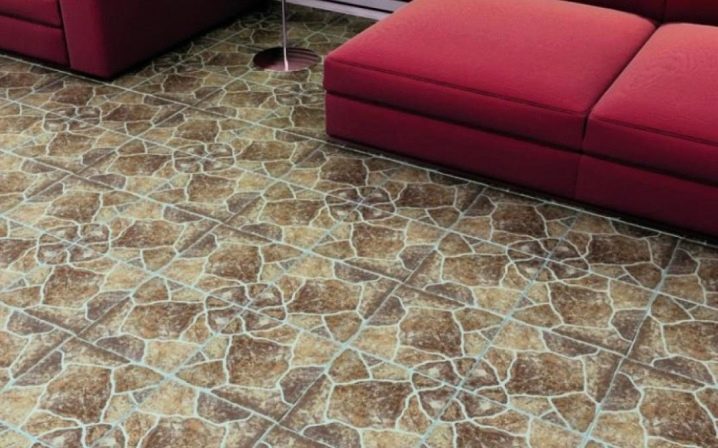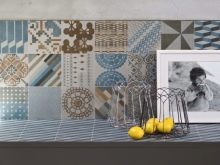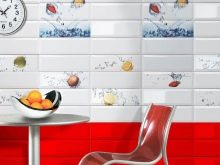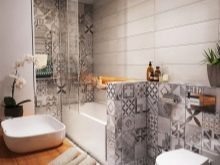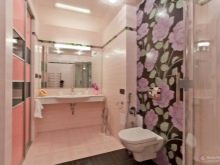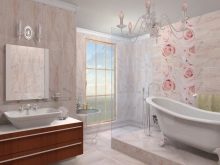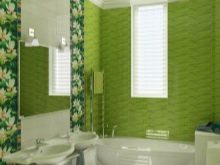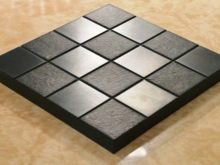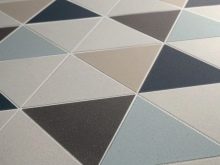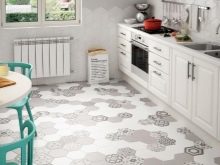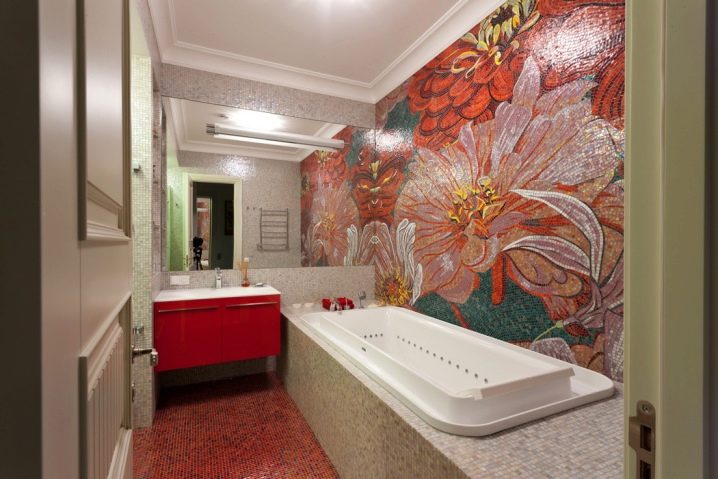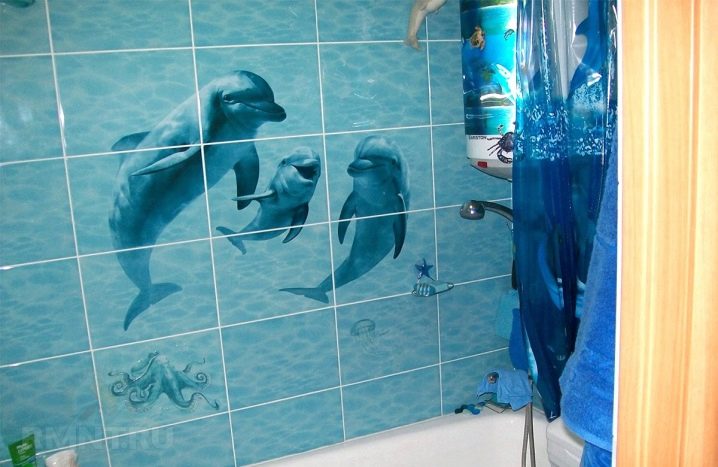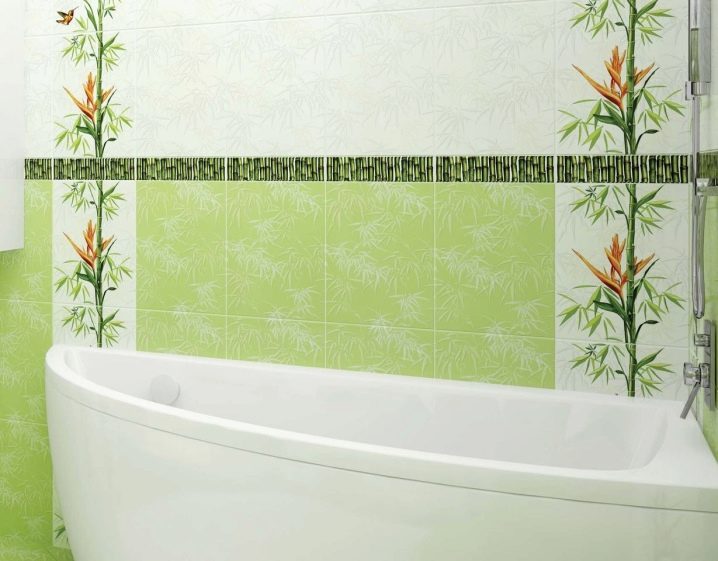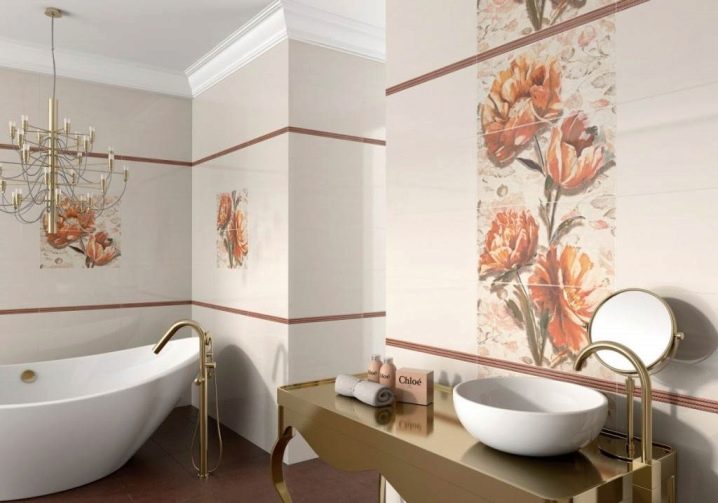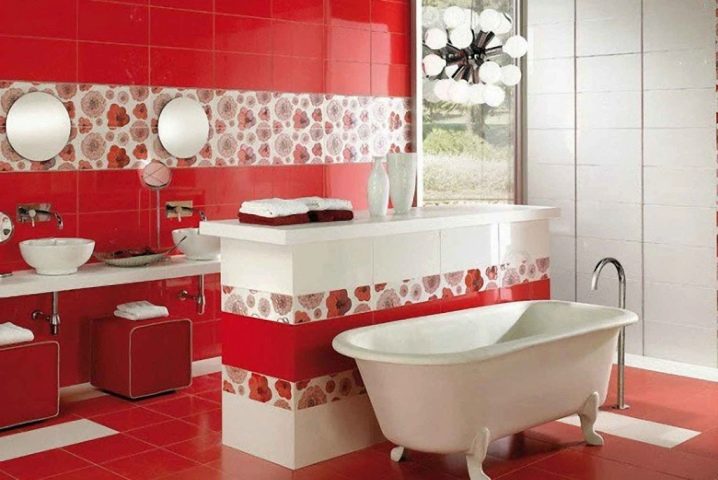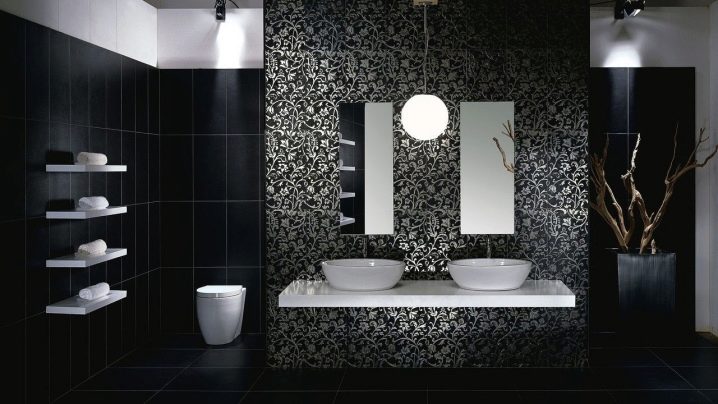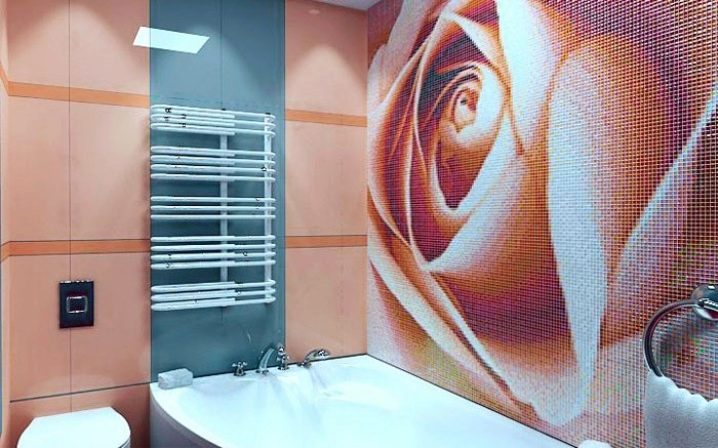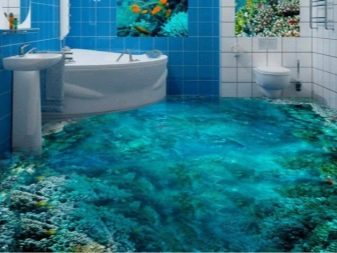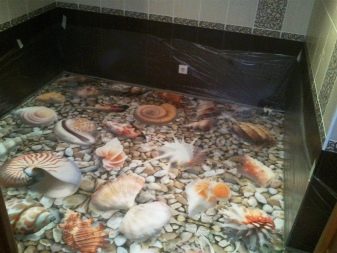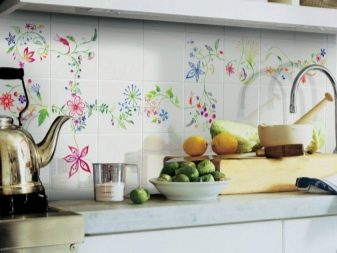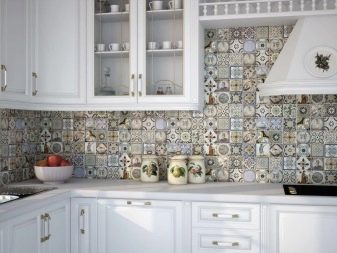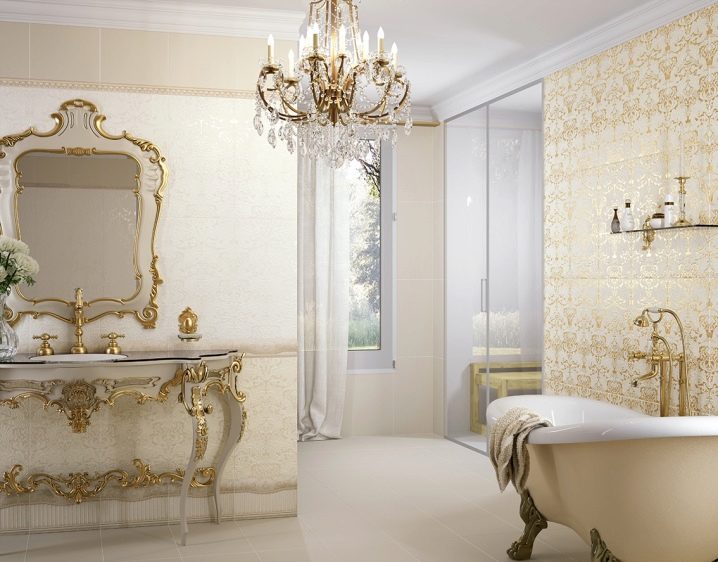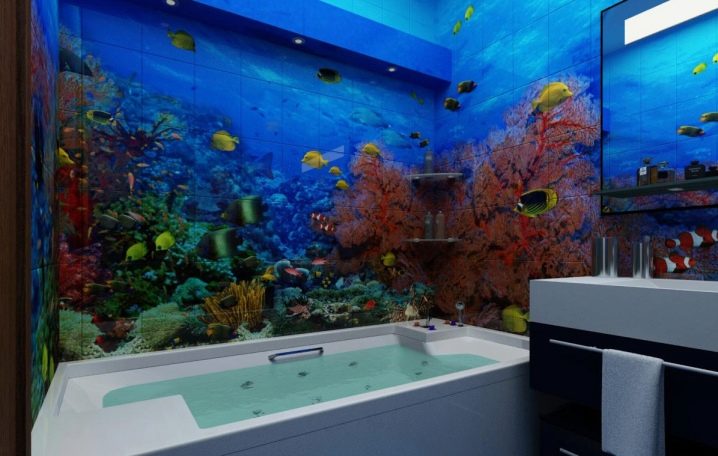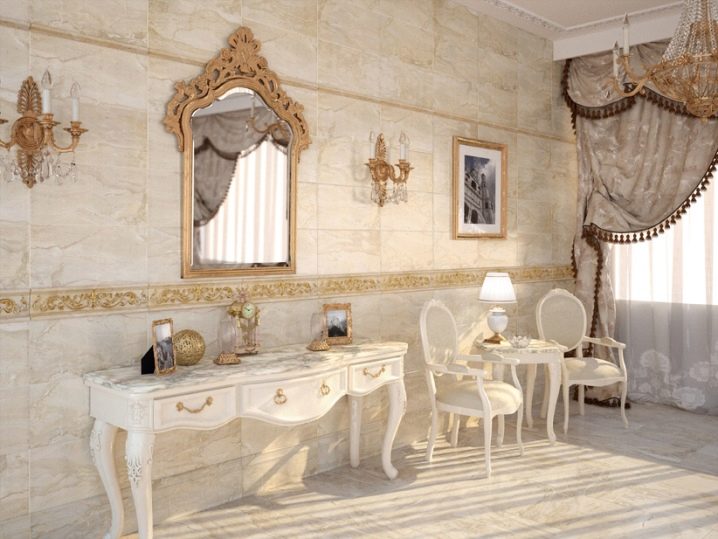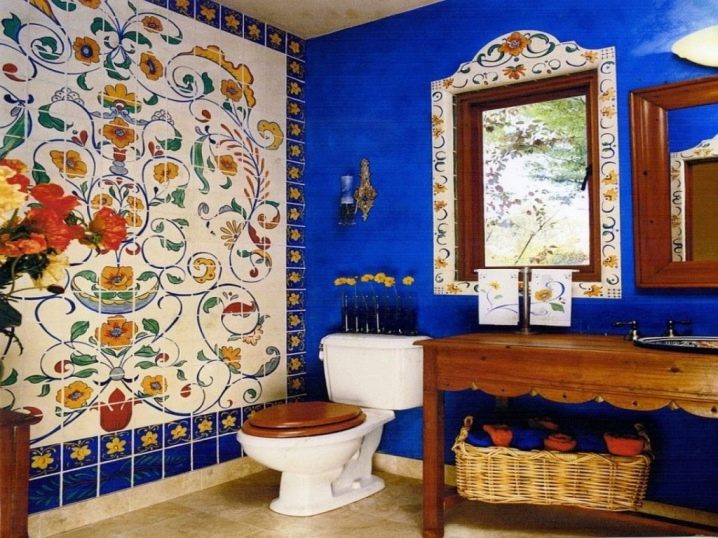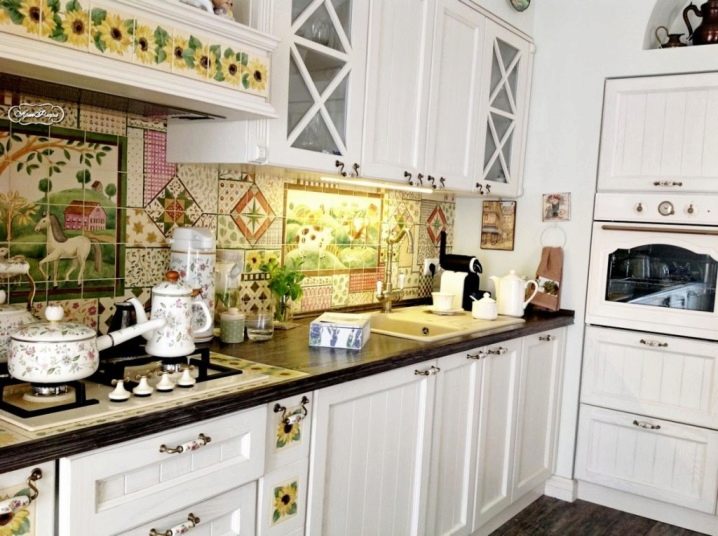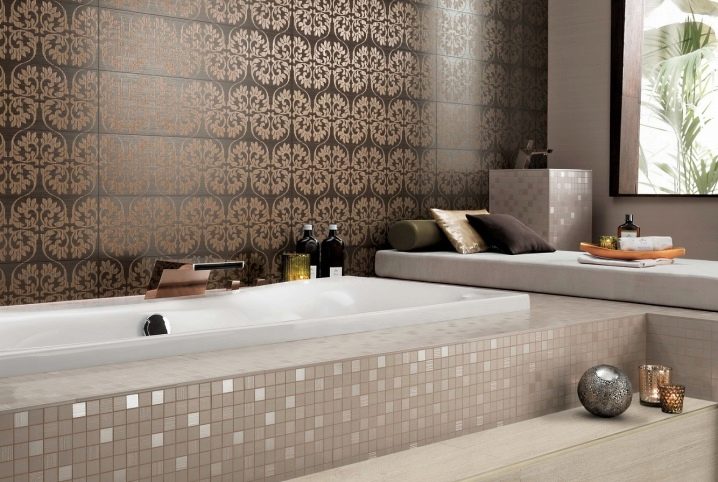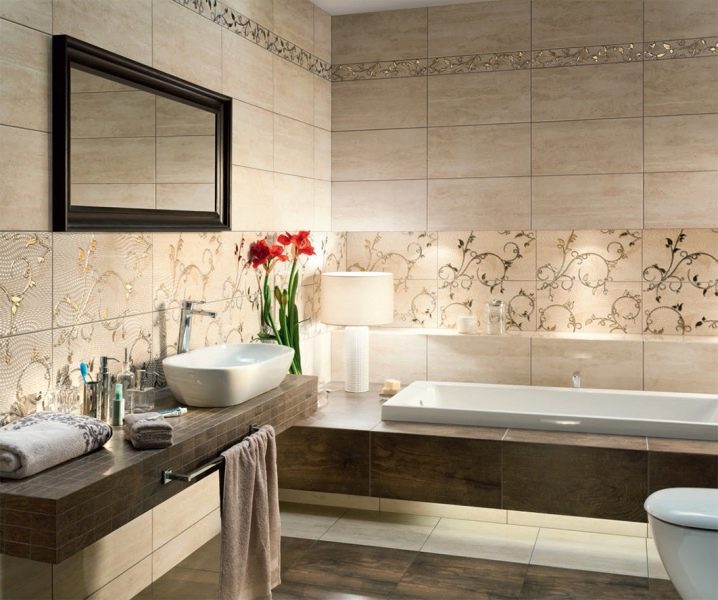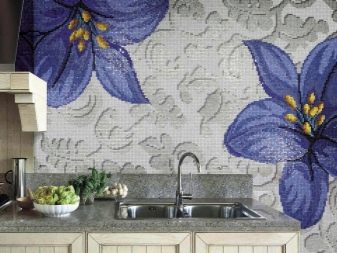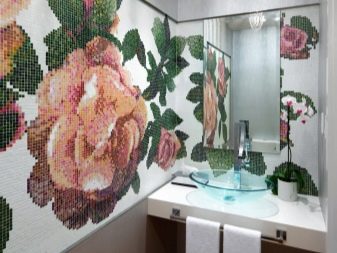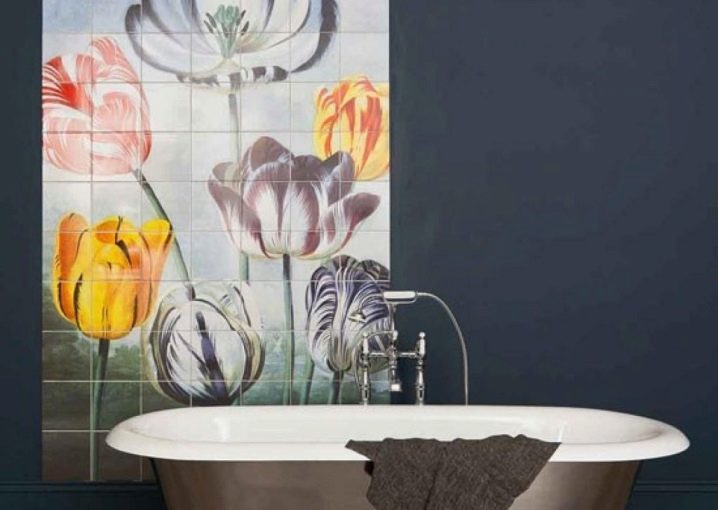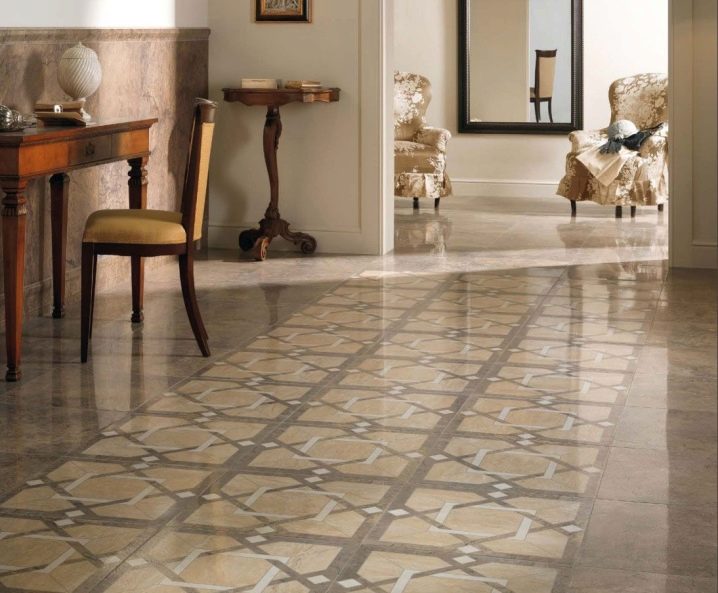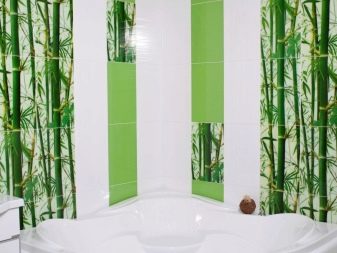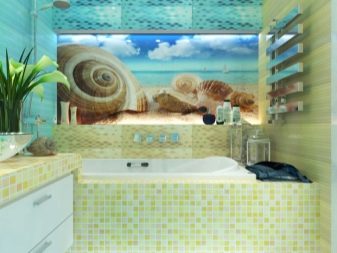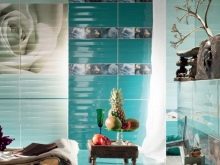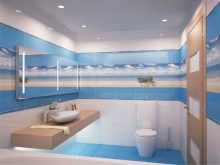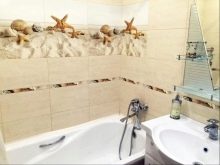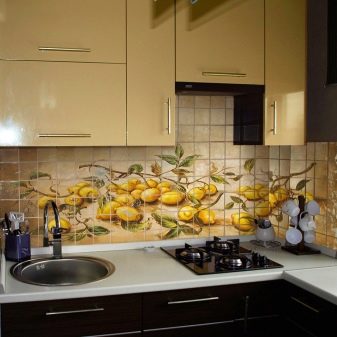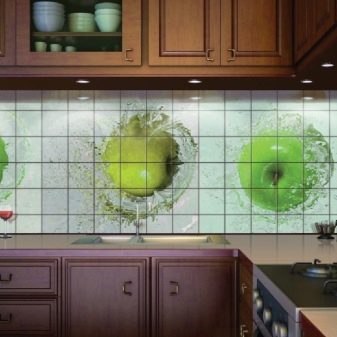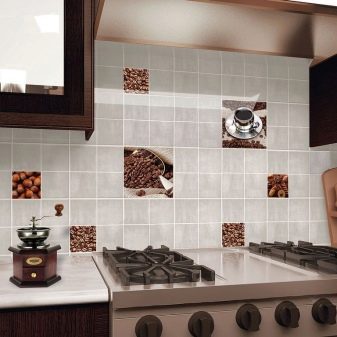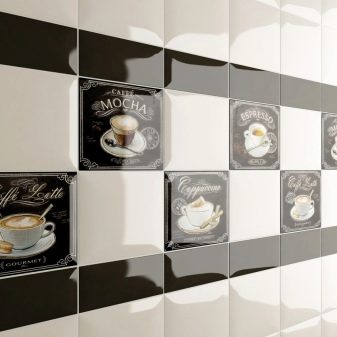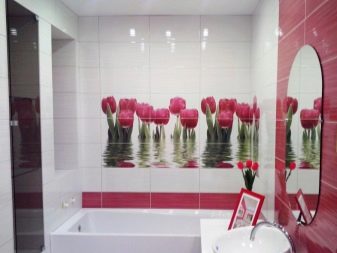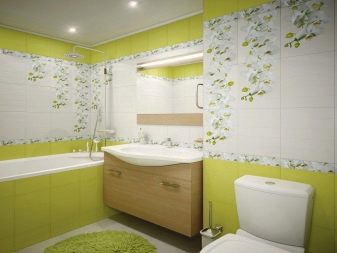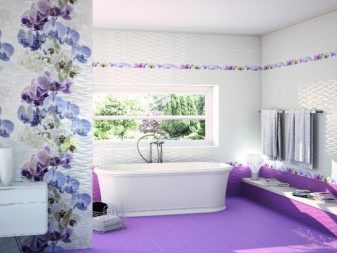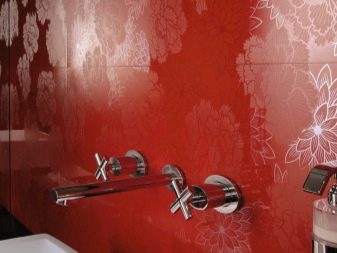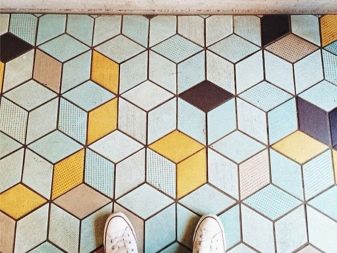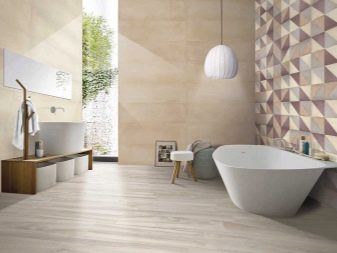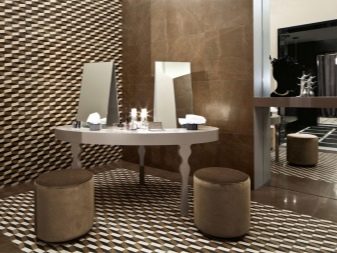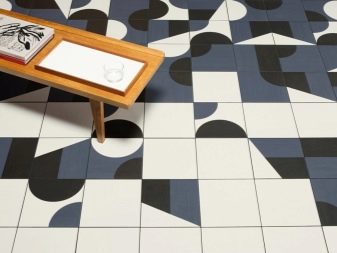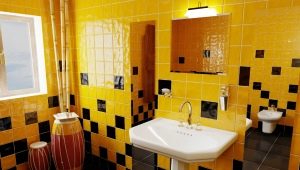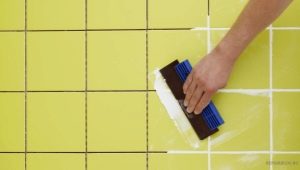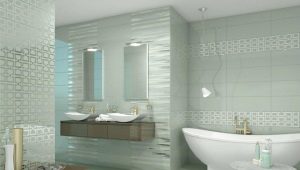Tile with a pattern: the types of products and all the nuances of choice
Wall or floor, decorated with drawings, always look original and interesting. But only if the measure is respected. Excessive images will turn a good idea into a tastelessly decorated room.
Tile with a picture - a great option for room decor. It is presented in stores in a wide range and allows you to create a unique interior that will satisfy every taste.
Special features
Tile with a pattern chosen for the walls or floor. Like any finishing material, it has its advantages and disadvantages.
The advantages include:
- durability;
- convenience in the care of the surface, the possibility of wet cleaning with the use of chemical cleaners;
- resistance to external factors: does not fade in sunlight, does not deform under the influence of moisture;
- originality - the interior takes on a unique look.
As minuses can be called:
- Fragility. If part of the tile breaks off or a crack appears, the integrity of the pattern is broken, and it can be restored only by replacing the entire element.
- Over time, drawing may get bored, become irrelevant, and replacing tiles takes a lot of time and effort.
Kinds
Depending on various factors, tiles can be divided into types:
- Wall or floor. The floor tile is much stronger, less susceptible to wear, resistant to external influences. It is usually larger, thicker and heavier, harder to cut. It is rarely produced with a bright design and colorful images, because the surface is erased over time. In addition, it is usually matte in order to reduce slip.
- Enamelled or uncoated. The first type of tile is a base under colored glass. Thanks to him, the material acquires brilliance, rich color, relief, special strength and resistance to moisture. Unglazed tiles are usually uniform and have no patterns.
- With dense or porous structure. It's about the basis of the material. It may or may not have pores.To measure the porosity of the product, it is immersed in water and determine the amount of liquid absorbed by it. Porous tiles are not recommended for use in wet areas.
- Ceramic tiles can be made in two ways: extrusion or extrusion. Using a press, compact the powder mixture and form it under pressure. The extrusion process uses a viscous mass that passes through an extruder - a special device.
- The raw materials used affect the color of the base.. For the enameled product, it does not matter, because in the finished form it is almost imperceptible. The non-enamelled material is colored by adding coloring pigments to the composition.
- Different tiles in shape: square, rectangular, complex shape.
- In addition, the tile can have a different size and thickness.
Depending on the manufacturing technology, certain types of patterned tiles are distinguished, which reflect all the above characteristics:
- Majolica. This highly durable type of tile has a porous pinkish base formed with a press. The material passes through two stages of firing - the body and enamel.Due to this, the surface is ideally even, smooth, with a glossy shine. This product is ideal for decorating walls with low humidity due to high porosity.
- Faience - porous colorless pressed tile, which passes through two stages of firing. Only top coat of enamel gives it color. The mixture for such a tile is carefully selected and prepared, and the firing process occurs in a stepwise manner. Thanks to this, the finished product is of high quality.
- Monokottura. Its base has a color from red to gray and a porous structure formed under the influence of the press. The material passes one stage of firing two layers at once: the base and enamel. Due to this, the finished product has a low cost.
- Clinker - the tile which passed one stage of roasting with a dense color basis, with enamel or without it. The finished product is obtained by extrusion, which makes it possible to manufacture it in various forms. The clinker is characterized by high strength, wear resistance, resistance to mechanical stress and temperature changes. In addition, it is easy to clean, amenable to any type of cleaning.
- Cotto. This material has a red, porous base, which is obtained by extrusion. The tile is usually not enamelled and it acquires the color of clay and, besides red, can have several shades, depending on the different types and impurities of the raw material. The finished product is highly resistant to mechanical stress, bending, compression, and the action of chemicals.
- Smalt - type of tiles made of colored glass. The product is molded, pressed, and then subjected to firing. In finished form, it has high strength and low water absorption, which allows its use in rooms with high humidity, for example, in swimming pools.
- Porcelain stoneware - heavy type of tile, obtained from special rocks of clay with an admixture of minerals that provide the color of the product. It is molded and then fired. The porcelain stoneware is very dense, its surface is smooth, durable, resistant to various kinds of impacts, has a low level of water absorption. This allows you to use it in wet areas, as well as in places with temperature changes.
Dimensions
The size of the tile can depend on its purpose: wall or floor, and also on its shape: square, rectangular or polygonal.
The standard sizes of a wall tile of a square form - 10, 15 and 20 cm. The standard of a rectangular shape - 20 * 30 cm.. Some manufacturers produce exclusive wall tiles, which can be up to 90 cm in size.
To find the optimal size tiles, you need to take into account a few points. First, it is the area of the room. Large tiles are not suitable for small rooms., it will visually reduce the space. In a very spacious room, too small elements with a pattern will be lost on the general background.will seem out of place.
To visually adjust the size of the room, you can use a rectangular tile. The side on which the tile is laid out the long side, will seem more elongated.
Floor tiles vary in shape and size. The standard size of a square printed product is 30 cm.
For laying out patterns and combinations on the floor tile is applied from 5 to 25 cm. Popular triangular tiles from 60 to 14 cm, hexagonal (15-23 cm), pentagonal (86-20 cm).
Separately, you can select mosaic tiles. Its size is very small - from 1 to 5 cm, which allows you to create an interesting design of walls and floors, to spread pictures or abstract patterns. Using a mosaic, you can correct an uneven surface.which cannot be achieved using standard tile.
Colors
The color palette of a tile with a pattern is represented by a wide choice. As noted above, the base tile depends on the material from which it is made. This is important only for non-enamelled products.
Enamel can be a variety of colors and be covered with drawings and patterns. Each color tile has its own characteristics in the interior:
- Blue. This is a classic color that fits almost all rooms. Basically, it is chosen for bathrooms. In this case, the pattern on the tile can imitate water: the sea, waves, splashed drops or ripples.
- Green. It can be used in any room. The associations that this color causes are associated with nature and foliage. Pictures on a green basis can be made in the form of flowers and other natural elements. With the help of them on the wall, you can create a whole panel on the plant theme.
- Beige. The drawing usually imitates wood, earth, natural elements that are suitable for decorating bathrooms, coffee or chocolate motifs in harmony with the kitchen interior.For other rooms fit abstract patterns. Beige palette is now relevant and for a long time does not go out of fashion.
- Red. This palette symbolizes passion, is suitable for temperamental people, goes well with gray, white, beige gamut. However, it should be used in limited quantities. Aggressive color can provoke excessive irritability, quickly tire.
- Black and white. Contrast design gives you the opportunity to creative interior design and is combined with all the scales. Geometric patterns and floral arrangements look harmonious.
Style and design
Tile with a pattern - the perfect solution to diversify plain walls or floor. The image can be large, occupying the entire surface, or small, repeating in several places.
For spacious rooms, a covering with a large pattern on a large-format tile will be suitable, as small details can be lost in space. For small rooms it is better to choose small drawings, otherwise at close range a large drawing will be difficult to perceive.
In the bathroom, drawings related to water and the sea are common: fish, dolphins, waves, shells. However, you can choose other pictures: butterflies, flowers and plants. The main thing is that they like the residents of the apartment and cheer up.
For the floor, you can also choose any image. A good option is to design it in the form of a seabed or a sandy beach.
For the kitchen is usually chosen tile with a pattern on the theme of food or kitchen utensils. You can choose a coating with a neutral floral pattern or a geometric pattern (triangles, diamonds, rectangles).
The tile with gold pattern will look stylish. It can be used in any room. It will give the room a luxurious and elegant look.
Another original solution is to order photo printing on a tile. Plus its that you can choose any image, up to family photos.
For the interior in a classic style fit tile in bright colors with calm patterns. You can use flowers or abstract ornaments.
For fans of the exotic, a tile with a repeating oriental pattern may suit: damask, flowers in oriental style. You can create a whole panel on the wall or on the floor.
Lovers of floral ornaments, wood motifs and marine themes will love the country style. Such an interior should reassure, create a feeling of unity with nature.
An interesting idea is the choice of a tile imitating some material: wood, stone, fabric, gold or leather.
How to choose?
Tile with a pattern can be selected for any room where it will be relevant: bathroom, kitchen, hallway.
There are several rules that will help you make the right purchase:
- Any image in the room will attract attention. It is important that it is combined with the entire interior as a whole in the chosen color range, style. The picture will look especially good if some decorative elements complement it and are decorated using the same patterns, patterns, colors.
- Patterns that mimic a mosaic, visually expand the space, so they are suitable for decoration of small rooms. But you need to comply with the measure, the excess of small parts makes the room "heavy", uncomfortable.
- For small rooms suitable tile with a large pattern, it will contribute to the visual expansion of the boundaries. To make the ceilings higher, it is better to choose vertical images.
Tile, decorated with a pattern, suitable for decoration of walls and floors. Combining in the same room both that and the other is extremely not recommended, in order not to create a feeling of congestion.
Successful examples and options
Tile with a pattern presented in a wide range. Bathrooms are often decorated with a tropical or marine decor.
For kitchens, usually the choice falls on the subject of food and utensils.
Floral motifs always remain relevant.
Geometric images with a triangular or rectangular pattern are suitable for a more restrained decoration of the room.
Master class on laying tiles in the bathroom, you can see in this video.
